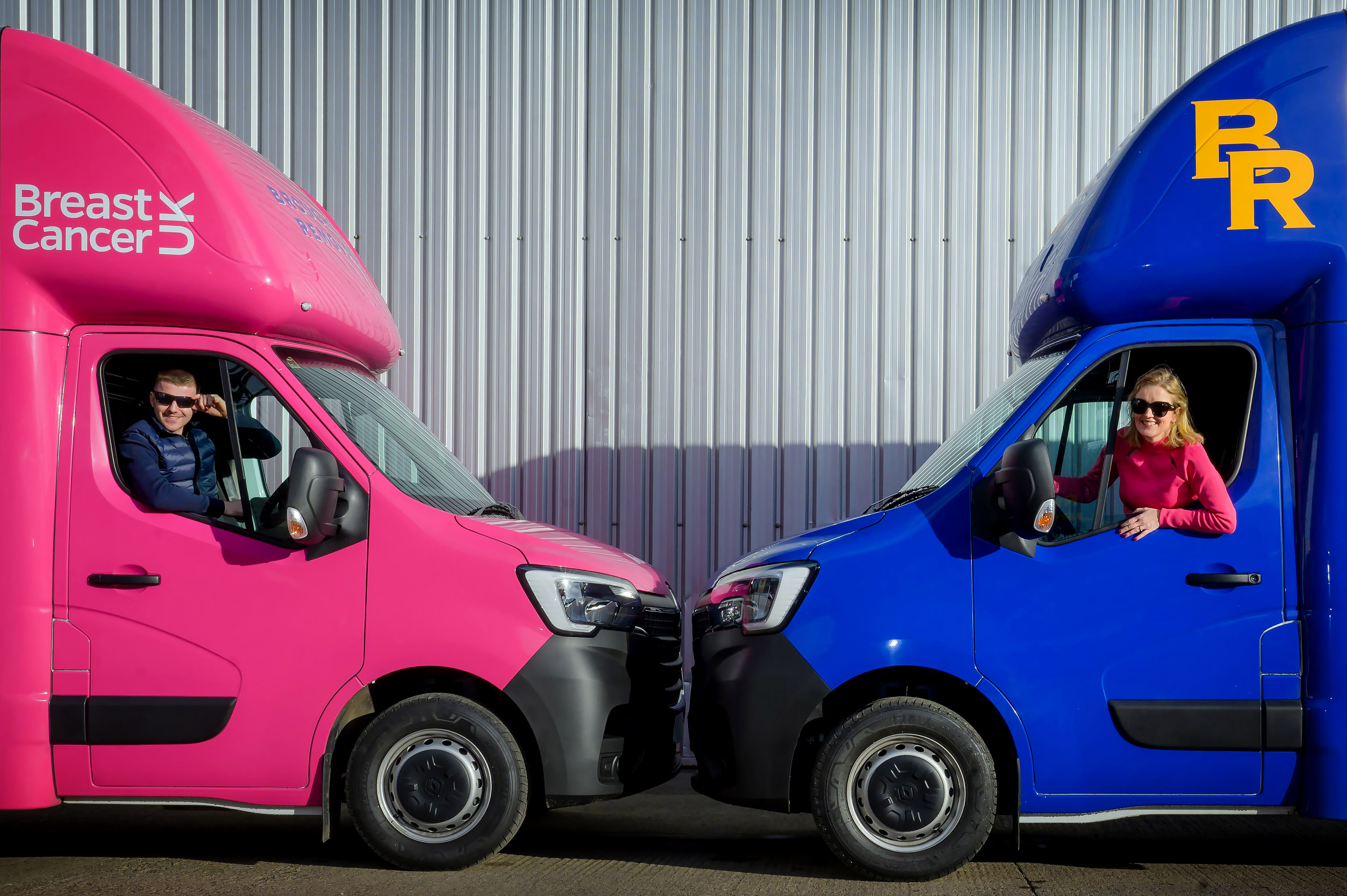Henny Braund’s successful tenure as CEO of blood cancer charity Anthony Nolan was built on a simple question. Andrew Holt found out more
Behind every charity challenge and vision is an outlook that can lead in new innovative directions. Henny Braund, chief executive of blood cancer charity Anthony Nolan, introduced something of a turnaround of her charity by a simple concept and question: why is the charity here? From this, a process of development and growth expanded out and from which the charity is still benefiting and growing.
Anthony Nolan, concluded Braund with simple eloquence, is the charity that saves the lives of people with blood cancer. And there is much need for saving lives as the statistics here are severe: every 20 minutes in the UK someone is diagnosed with blood cancer. There are around 1,700 people in the UK in need of a bone marrow, or blood stem cell, transplant. This is usually their last chance of survival. 70 per cent of patients will not find a matching donor from within their families; Anthony Nolan then matches individuals willing to donate their blood stem cells or bone marrow to people who desperately need lifesaving transplants.
It was set up in 1974 by Shirley Nolan after her son, Anthony, was born with a rare illness. The only cure was a transplant, but there was no system to find a matching donor. Shirley started Anthony Nolan’s register – the world’s first – to connect potential donors with people like her son.
So when she started in 2009 as chief executive, Braund found the charity was in need of its own boost, so she introduced what became an ambitious five year plan to kick start a number of initiatives and get the organisation out of a silo way of working and develop Anthony Nolan as a new brand. “When I got here everyone was in their own little rooms. I got rid of that. I literally knocked the walls down,” she says.
Simple aims
The starting point was a unified charity vision. It was here she asked everyone in the charity: why is Anthony Nolan as a charity here? “The answer is to save lives,” was her conclusion. “It was, and is, about getting people to think about that influential focus; think about that as an ambition.” To that end she wanted to put a million people on its register.
“And think not just about the donor, but the patient, and get the best for them.” A simple mission statement would result in many positive ripple effects throughout the organisation. And a process that is still reaping rewards. This included a commitment of a lifesaving transplant to every person with blood cancer who needs help; for all people with blood cancer to have the best possible chance of survival following a transplant; and to make it as straight-forward as possible for people to join Anthony Nolan’s register.
Though these were something of big ambitions, her approach, she says is a simple one: “I am a great believer in simplicity. We have four aims: getting the best donor; improving patient outcome; putting customers first and having the right people.”
The net result has meant more donors than ever are being selected, which will have benefits for years to come. Key in the whole process has been Anthony Nolan’s huge shift from requiring blood samples to saliva samples to join the register. “Moving to saliva was a big moment,” says Braund. This means people can now fill out a simple form and spit in a simple tube Anthony Nolan send them through the post. Braund says: “We recently went from 20,00 donors a year to 75,000.” As a result, the charity is set to hit half a million donors by the year-end. “And many more lives saved in the future.”
As part of this, Anthony Nolan recruited an impressive 10,000 young men, a key demographic for the charity, to the register alone. Remarkably, 41 have already been selected for the next stage of the donation process and one has donated. It also increased umbilical cord blood collection activities including collecting 24/7 at existing hospitals for a year. These huge changes will mean an extra 200 lives a year can be saved.
With Braund’s leadership vision, Anthony Nolan made a historical partnership with the NHS Blood and Transplant (NHSBT) which introduced a single search point for UK Transplant Centres, managed by Anthony Nolan and improving the quality of data held on donors to speed up the process for identifying matches.
The collaboration with NHSBT required the two organisations, with quite separate cultures and operations, to realise an ambitious vision. It was delivered, on time and within budget, in January last year. Transplant centres are already seeing the benefits of the new system which will continue to save lives.
This collaboration has put Anthony Nolan in a good position to get continued government funding. Anthony Nolan recently got its third tranche of £2m – totalling £6m – from government. “The community understood the benefits of working together: it was not just us, but NHSBT,” Braund says of the motivation behind the government supporting its work. There is a wider lesson here in the clear benefits of greater collaboration working amongst sector organisations.
Big numbers
The other benefit of Braund’s leadership is that the numbers add up in a whole range of ways. Income has risen to an outstanding £41m, up from £25.9m in 2009, when Braund took the helm. Fundraising income is now £7.5m a year, up by £2m in just two years. And Anthony Nolan has an impressive 3,300 volunteers.
The organisation is growing globally. There are now 67 stem cell donor registries in 49 countries; 47 cord blood banks in 31 countries; the current number of donors and cord blood units in the database is: 20,691,669 (20,130,194 donors and 561,475 Cord Blood Units); and it has just reached the 1 millionth bone marrow transplant worldwide. “From one single mum’s vision to helping over a million people worldwide,” ponders Braund.
There are though still on-going challenges: White Northern Europeans have a 90% chance of finding a bone marrow donor, but this falls to just 40% for people from Black, Asian, and Ethnic Minority backgrounds. “We urgently need people from Black, Asian and other Ethnic Minority backgrounds to sign up, as they are currently under-represented on the register,” warns Braund.
There is also still a need for more young men aged 16-30 to sign up, as they account for 80 per cent of bone marrow donations but make up just 11 per cent of the register. Though Braund says the younger generation are rising to the challenge. “The younger generation for us, are very altruistic,” she says. Though she adds: “Currently, we can only find a matching donor for half the people who come to us in need of a lifesaving transplant. We are working hard on recruiting not just more people to the register, but those our research has found are most likely to be selected as donors.”
Leaving herself out of the dramatic improvement the charity has experienced, she says of Anthony Nolan’s achievement under her leadership: “It has been a testament to the employees here and the trustees for their belief in our vision.”
Braund was previously resources director at Shelter, the housing charity, and she draws very effectively, on 20 years experience in the sector. At present she is also trustee for the Small Charities Coalition, but has been chair for Aids and Housing (Health and Housing) and has been a trustee for Thamesreach and Shelter Trading. On her views on what makes a good CEO, she says: “Self awareness, a bit of bloody mindedness and drive.”
Given the success of the charity what does the future hold? “It is around insuring we remain on the front foot. That we can always raise the money we want to, to do the things we want to do. Science is changing; we need to be able to be nimble and adapt. Our vision is to try and supply a transplant for everyone that needs one.“
Such focused pragmatism mixed with a central belief in the work of the charity has already reaped great success. “It has been quite a journey,” smiles Braund. With her ambition and vision it is a journey that has probably just started.
Latest News
-
Breast cancer charity founder steps down after 30 years
-
Mencap takes over closed charity’s shops amid retail expansion
-
Charities to benefit from £3.1m from insurer
-
Dr Alex Rhys: Why quiet leaders belong in charity leadership
-
Suneet Sharma: Embedding governance as a strategic enabler
-
More than one in four charity workers fear losing their job this year
Charity Times video Q&A: In conversation with Hilda Hayo, CEO of Dementia UK
Charity Times editor, Lauren Weymouth, is joined by Dementia UK CEO, Hilda Hayo to discuss why the charity receives such high workplace satisfaction results, what a positive working culture looks like and the importance of lived experience among staff. The pair talk about challenges facing the charity, the impact felt by the pandemic and how it's striving to overcome obstacles and continue to be a highly impactful organisation for anybody affected by dementia.
Charity Times Awards 2023
Mitigating risk and reducing claims

The cost-of-living crisis is impacting charities in a number of ways, including the risks they take. Endsleigh Insurance’s* senior risk management consultant Scott Crichton joins Charity Times to discuss the ramifications of prioritising certain types of risk over others, the financial implications risk can have if not managed properly, and tips for charities to help manage those risks.
* Coming soon… Howden, the new name for Endsleigh.
* Coming soon… Howden, the new name for Endsleigh.
Better Society

© 2021 Perspective Publishing Privacy & Cookies










Recent Stories